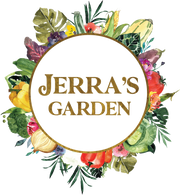Hurry, only 13 items left in stock!
Miniature Blue Popcorn Corn Seeds - Heirloom Variety for Gardens & Snacks
Zea mays
Listing is for 1 packet of minimum 30 seeds
Add charm and versatility to your garden with Miniature Blue Popcorn corn seeds, a unique heirloom variety cherished for its small, deep blue ears that pop into delicious, fluffy white popcorn. This compact, easy-to-grow corn is perfect for smaller gardens and makes a striking ornamental addition as well. The ears are small, measuring just 2 to 4 inches long, but the 6- to 7-foot plants frequently produce three or even four ears per stalk. Unlike sweet or dent corn, this variety is grown specifically for popping, delivering both flavor and visual appeal. Whether you’re looking for a fun garden project or a unique crop to share, Miniature Blue Popcorn is a fantastic choice for home gardeners.
My top 5 tips for successfully growing corn - or go visit my YouTube channel Jerra's Garden to watch my How to Grow Corn video: https://youtu.be/XhrJQ09dajQ
1. Corn must be grown in a decent size block in order to properly pollinate and produce full ears of corn. Corn is wind pollinated. The tassels that form at the top release pollen in the air that floats down and lands on the silks. Every silk is attached to a single kernel on the cob of corn. If the silk doesn't get pollinated, the kernel will not grow resulting in cobs of corn with gaps in it. Do not grow just a few plants. Ideally you would want a 8ft x 4ft growing area, with at least 4 rows. I sow/plant the corn 8-10 inches apart.
2. The corn ear worms will come so be ready. These are small brown worms that bore into the stalk and ultimately into the forming cobs of corn. They will ruin the entire cob. What makes it so difficult, is that once they bore into the stalk/cob, its hard to treat for the worms. I highly recommend the use of spinosad. BT will also work ok, but its not as effective as spinosad against this particular type of worm. Spinosad is slightly stronger and has the added benefit of killing the worm on contact (BT does not). I spray at the first signs of worm chewing damage on the leaves to reduce the population before they work their way into the stalks/cobs.
3. Corn is a grass relative. They need high amounts of nitrogen fertilizer to grow strong, lush, green stalks which in turn produce bigger and fuller cobs of corn. Look for fertilizers that are high in nitrogen, at least 10% by weight or more. Apply small amounts of fertilizer every 3 weeks to keep a consistent supply of nitrogen for the plants.
4. Corn loves water. The plants will dry and brown up if the soil is too dry just like grass. Make sure moisture levels stay consistent.
5. If you plan to save your own seed, please note that corn very easily cross pollinates with other corn varieties. Plant each variety at minimum 150FT apart to avoid cross pollination.
Follow me on social media for more gardening info and tips. IG, YT, and TikTok: jerrasgarden.
Ideal Growing Conditions
Sun: Full sun
Water: Keep the soil consistently moist
Fertilizer: Corn is in the grass family and basically just needs 2 things, lots of water and nitrogen. Amend the soil with something high in nitrogen before planting, like organic blood meal or synthetic ammonium sulfate granules. Then plant the corn. Follow fertilizer package directions when re-applying fertilizer.
When & How To Sow Seeds: General guidelines say to start direct sowing popcorn seeds after your last spring frost date. You can continue to direct sow more successions until 110 days before your first winter frost date. Direct sow 1 seed, every 6 to 8 inches, in rows that are 3FT apart. Plant 3 to 4 rows, so the corn grows together in a square block formation. This helps get better pollination since corn is wind pollinated. Miniature blue popcorn plants do not get very tall like other types of corn. Therefore, it can be grown in raised beds, containers, and grow bags. Just space them 6-8 inches apart, in raised beds or containers that are atleast 12 inches deep.
Germination: 7-14 days
Days To Maturity: 90-100 days
How & When To Harvest: Harvest when the ears of corn are dry and the kernels are hard and shiny.
Common Diseases: The most common disease is northern corn leaf blight, caused by a fungus that creates long, gray-green lesions on the leaves, reducing plant health and yield. To treat it, ensure good air circulation by spacing plants properly. Remove infected debris after harvest, as the fungus overwinters in plant material. For severe cases, fungicides labeled for corn can help control the disease. Crop rotation also reduces the chance of recurring infections.
Common Pests: The most common pest when growing corn is the corn earworm, which is a brown colored worm with two "eye spots" on its head. If you notice the leaves are chewed up, or you find frass (worm poop), start spraying with spinosad. Treat early on, before the worm makes its way into the cob where its protected from treatment sprays.
Do I have a YouTube video tutorial on how to grow this? YES
Watch it here: https://youtu.be/XhrJQ09dajQ
Additional Tips/Information: N/A










